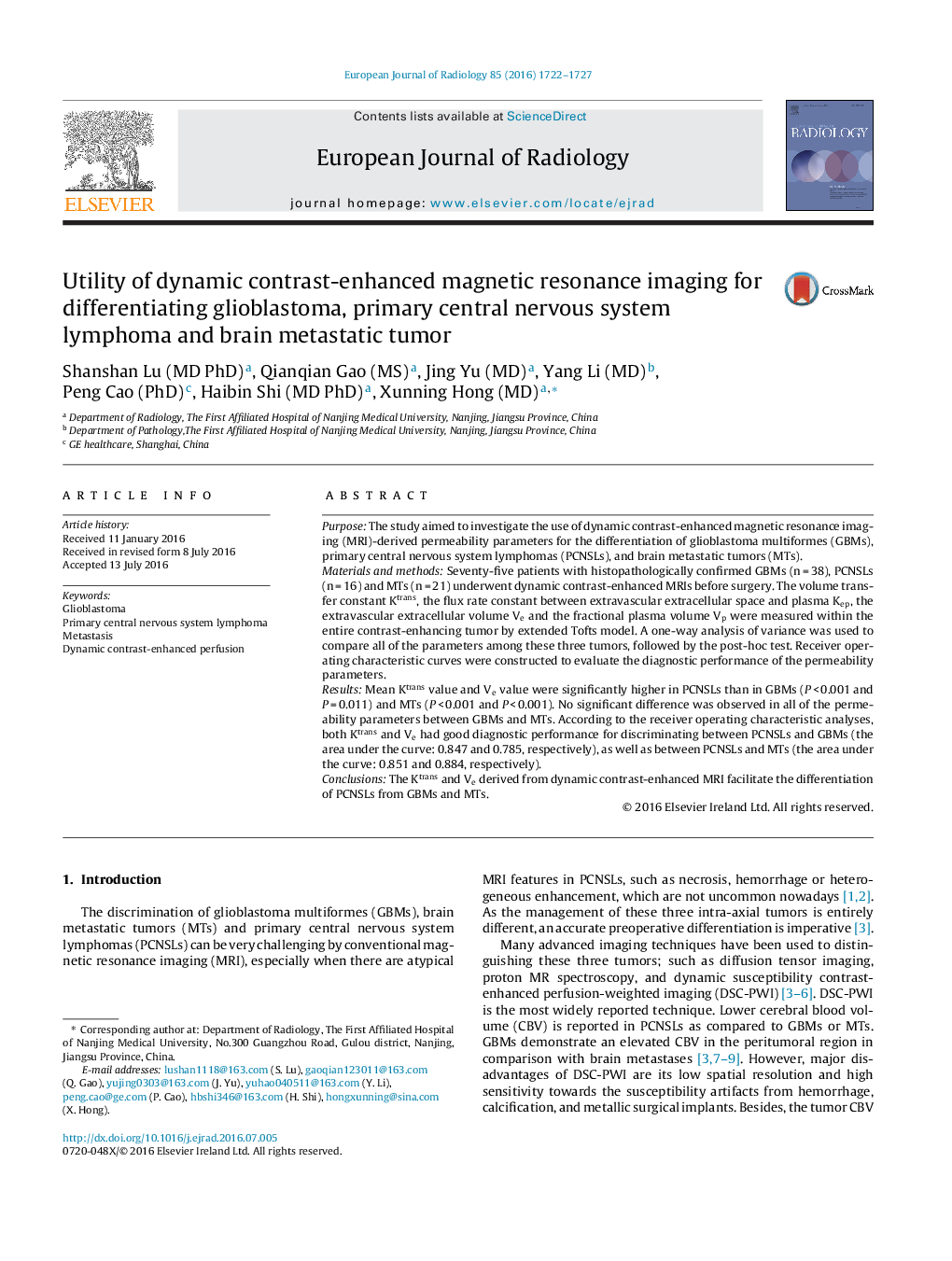| کد مقاله | کد نشریه | سال انتشار | مقاله انگلیسی | نسخه تمام متن |
|---|---|---|---|---|
| 4224921 | 1609737 | 2016 | 6 صفحه PDF | دانلود رایگان |
PurposeThe study aimed to investigate the use of dynamic contrast-enhanced magnetic resonance imaging (MRI)-derived permeability parameters for the differentiation of glioblastoma multiformes (GBMs), primary central nervous system lymphomas (PCNSLs), and brain metastatic tumors (MTs).Materials and methodsSeventy-five patients with histopathologically confirmed GBMs (n = 38), PCNSLs (n = 16) and MTs (n = 21) underwent dynamic contrast-enhanced MRIs before surgery. The volume transfer constant Ktrans, the flux rate constant between extravascular extracellular space and plasma Kep, the extravascular extracellular volume Ve and the fractional plasma volume Vp were measured within the entire contrast-enhancing tumor by extended Tofts model. A one-way analysis of variance was used to compare all of the parameters among these three tumors, followed by the post-hoc test. Receiver operating characteristic curves were constructed to evaluate the diagnostic performance of the permeability parameters.ResultsMean Ktrans value and Ve value were significantly higher in PCNSLs than in GBMs (P < 0.001 and P = 0.011) and MTs (P < 0.001 and P < 0.001). No significant difference was observed in all of the permeability parameters between GBMs and MTs. According to the receiver operating characteristic analyses, both Ktrans and Ve had good diagnostic performance for discriminating between PCNSLs and GBMs (the area under the curve: 0.847 and 0.785, respectively), as well as between PCNSLs and MTs (the area under the curve: 0.851 and 0.884, respectively).ConclusionsThe Ktrans and Ve derived from dynamic contrast-enhanced MRI facilitate the differentiation of PCNSLs from GBMs and MTs.
Journal: European Journal of Radiology - Volume 85, Issue 10, October 2016, Pages 1722–1727
